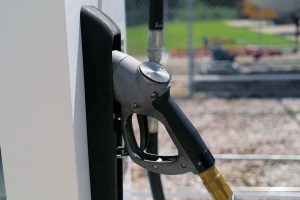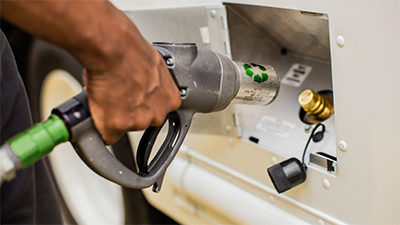Sorting Through Alternative Engine Fuel Messages Pt. 1

Let’s face it – “green” is the new black. Everywhere we turn, companies are overloading us on information about how to go green, reduce our carbon footprint, and save energy. We hear about composting, recycling, and unplugging appliances not in use…and, with a bit of extra effort, the average American household can do these things. These concepts are easy to grasp.
But what about the alternative fuel messages filling the airwaves? Are the solutions for going green on the road just as easy to grasp?
Do any of these phrases ring a bell? “… increases fuel economy… reduces carbon foot print… increases energy independence… reduces maintenance costs… increases energy efficiency… reduces tailpipe emissions…”
Thought so. But they often leave people asking the questions, ‘what does it all really mean?’ and ‘aren’t these solutions for the future?’
The energy world can be a confusing and scattered consortium of conflicting messages. The only message all the fuels seem to agree on is their claim to be the best sustainable long-term solution.
I have a huge advantage in helping me understand each type of alternative engine fuel. With nearly 20 years of experience in the engine products business, and most recently, leading an alternative fuel engine product company, I’ve had many resources to pull from to sort out the alternative fuel debate raging around me. Much of what I’ll share in this and future blogs I’ve learned on the job or delving into decades worth of research. My company, ROUSH CleanTech, is equipped with some of the smartest and well-studied power train engineers in the world. In 38 years, if ROUSH has been known for one thing… it’s making engines “go.”
Their input helped me to form these conclusions about each method of alternative fuels available:
Electric and Battery
Pros: no tailpipe emissions, domestic
Cons: suffers from grid and battery quality, upstream methods for producing electricity (coal burning and nuclear plants) have pollution that isn’t detected at tailpipe
Compress natural gas (CNG)
Pros: clean, domestic, abundant
Cons: expensive to deploy (infrastructure and vehicle hardware cost mean high price of entry)
Hydrogen
Pros: clean, domestic, abundant
Cons: low on power, requires added compression and featured low fuel economy
Propane autogas
Pros: clean, domestic, abundant, affordable to deploy, easily adaptable, successful global adoption footprint of 14 million vehicles, largest alternative fuel refueling infrastructure in U.S.
Here’s what I think: All domestic sources of energy are good – in their own way. They are clean, domestic and abundant. And, the for true energy independence, the first stop is for fleet operators to adopt a green attitude and vow to switch their vehicles to a cleaner-burning fuel. History and research proves that fleets drive the infrastructure creation for consumers to be able to obtain and use new technology at an affordable price and acceptable performance level. There are plenty of centralized fleets in North America… well over 1 million units – a very acceptable place to start.
Our goal should be to maintain an equal playing field where each domestic-based engine energy solution can fend for itself in the eyes of North American fleet managers. Allowing fleet managers to thread the needle of which fuels work for them will achieve the following:
- Reduction of operating costs
- Reduction of dependence on imported oil
- Cleaner environment (versus gasoline and diesel)
- Operation in a compatible and reliable manner that allows the most secure comfort for the operator
- Their choice of domestic, abundant, easy to get, easy to work with fuel
At ROUSH CleanTech we have the benefit of the deep research needed to come to solid conclusions. We are not in the drilling, rigging, or fuel distribution business. We are in the business of testing, looking at the facts and coming to a conclusion that allows us to invest our (own) money into a product that we feel offers the best answers to all these questions.
It’s propane autogas … 14 million vehicles can’t be wrong.
While we will need them all, once you dig through the infrastructure requirements, cost to convert, availability, clean burning nature, sustainability of consistent return on investment, domestic sources… propane autogas is the pack leader, followed closely by natural gas.













